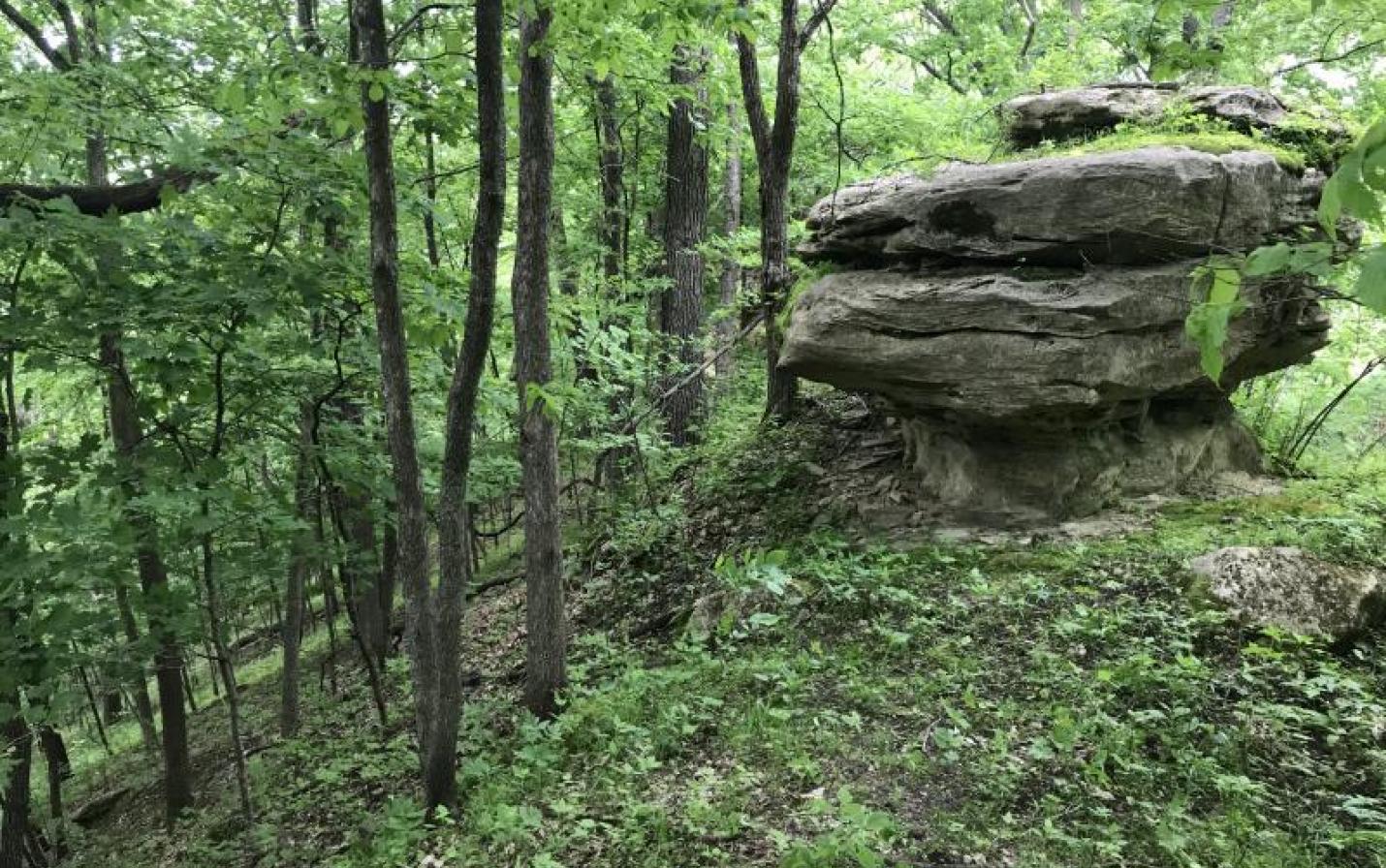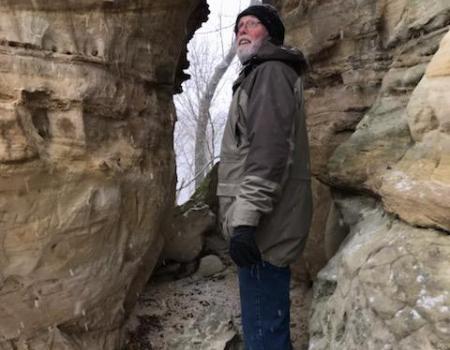
LA FARGE, WI – Joan and Kurt Peterson were both drawn to Wisconsin’s driftless area as an ideal place to immerse themselves in nature during their retirement years. When they found a 40-acre parcel of beautifully forested property just outside of La Farge back in 2011, it didn’t take long for them to know it was the right place to call home. Kurt, who grew up fishing in Wisconsin, knew right away, and Joan was easily convinced when she learned about the nearby Kickapoo Valley Reserve. Now, ten years later, they have permanently protected their 40-acre parcel of heaven with the help of their local land trust, Mississippi Valley Conservancy.
Their property is home to diverse native habitats, including limestone bluffs, mixed forest, and a sedge meadow with a creek running through it. A handful of exposed dry cliffs are also located on the land, providing crevices and fissures in which wildlife find shelter. Kurt and Joan are actively managing their forest to help keep a diversity of native trees for their beloved birds. It’s no wonder the birds love this land so much, especially because four native species of oaks are found here. Oaks are an important component of forests in the driftless area and provide food and habitat for over 500 species of insects, thereby providing an important source of food for early migrants and breeding birds!
Krysten Zummo-Strong, the Conservancy stewardship associate, said, “The Peterson property is exceptionally diverse, including a creek and sedge meadow at the lower elevations and diverse oak-hickory forest in the upper elevations. As our climate continues to shift, pushing species further north and higher in elevation, properties with this kind of habitat diversity will play an important role in providing our native plants and animals the space to adapt.”
Joan and Kurt were still living in Chicago when they purchased the property, and they spent many weekends getting to know it while staying in the little cabin that sits near to where they have since built a home. Then, as now, they spent a great deal of their time viewing all the wildlife activity, including some rare plants and animals they hope the conservation easement will help to protect. Knowing how important it is to have data on rare species, they document these species with natural resources agencies while providing private and protected habitat. They are active birders and are citizen-scientists who report their sightings to programs that track and record bird populations, such as eBird and Project FeederWatch – both programs of the Cornell Lab of Ornithology. Their land is situated within the Kickapoo Valley Reserve - Wildcat Mountain Important Bird Area – an area of focus for the Kickapoo Bird Habitat Initiative for habitat management, data collection, and public education – and they enjoy knowing their bird reports are used for that project.
They built their new home with great consideration of the environment. The siting and design maximize the use of natural light for passive solar gain, the home is heated with a geothermal system, and they chose sustainable and local materials and fixtures as much as possible. To help offset their carbon footprint, they even invested in two off-site solar panels with their local renewable energy cooperative.
Joan, who is certified as a Wisconsin Master Naturalist, first read about Mississippi Valley Conservancy in a magazine, and she and Kurt visited several nearby private and public lands to learn more about conserving land in the driftless area. “The conservation easement gives us a sense of peace in knowing the land will be protected for generations,” she said. “It’s our legacy for the land and the plants and animals that live here.”
The conservation easement means that the land cannot be mined, developed for housing, or otherwise disturbed – a legal agreement that subsequent owners must honor, guaranteeing that the land will be available for its scenic values, its importance in slowing runoff through permanent vegetation, and its habitat for wildlife.
Joan and Kurt especially enjoy nurturing habitats for birds that visit and enjoy the nesting boxes and feeders they’ve provided. They have also planted chokecherry and serviceberry bushes, and they’ve seeded native prairie plant species in some areas that needed cover.
“We see ourselves as temporary caretakers of this property,” says Joan who says they are inspired by conservationist Aldo Leopold. “We purchased it for the right to enjoy it during our lives.” The land is also enjoyed by the Petersons’ daughter and granddaughter who live nearby.
